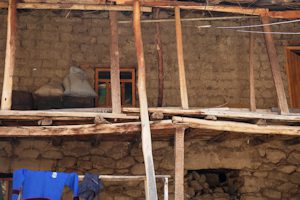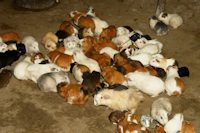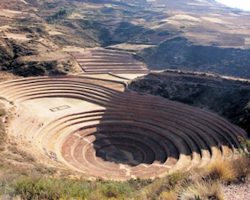Peru
A beautiful Country
A beautiful Country
Click to View
A 16TH-CENTURY MONASTERY built on the foundations of Amaru Qhala’s Inca palace, the building was damaged during an earthquake in 1650. During its restoration, a tiny but splendid Baroque chapel was added, which you can still visit to this day. Belmond Hotel Monasterio is now recognised as a historical landmark by Peru’s National Institute of Culture.
where we stayed
This is the hotel we stayed at while in Cuzco, Peru. The first photograph is one we took of the Plaza near our hotel. The rest are from the Hotel Monasterio’s web site and is reproduced here with their permission.
Machu Picchu
Here are some of the photographs we took (except for the three wedding photos) while we were in Peru. It includes a mixture of photographs from Machu Picchu and the towns between Machu Picchu and Cuzco. Also check out the interactive map at our hotel’s web site, the Sanctuary Lodge.
Click to View
A Beautiful Country

Peru is a beautiful country. The trip was filled with stunning scenery, beautiful sights and wonderful people.
Our first experience of Peru was in the Airport of Cuzco. The airport is a normal South American airport in Cuzco which is over 11,000 feet (or almost 3,400 meters) above sea level. There was nothing unusual or out of the ordinary until we saw a kiosk for oxygen. Yep, right there along the wall was a kiosk with large green tanks of O2 with a sign that read “Free Oxygen”. Although we didn’t partake you could stroll over, put on a mask, and enjoy.
After our enlightening experience at the airport we made our way to our hotel. Our hotel, the Hotel Monasterio, was originally built in the 16th century as a monastery. What a beautiful place, there is still a Cathedral and a beautiful courtyard among other things here. During registration we were seated in a long open room and offered tea. I recommend drinking the tea. Coca Tea, or (mate de coca or tea de coca) was offered to us nearly everywhere we went. It is said that drinking this tea or chewing the coca leaves can help with altitude sickness and it's affects such as headaches. Well, we drank a fair amount of the tea and while I did chew the leaves a few times Lynn did not care for the bitter taste. You can see some hotel pictures at their web site or here.
In addition to being offered the tea we were advised (more than once) to rest the first day, and of course not to drink any alcohol; this gives the body a chance to acclimate to the altitude. Well of course after going to work for part of the day, two plane trips, a ride from the airport and being up for over 30 hours we decided to ignore their advise. After a quick bite to eat, we promptly hired a driver and off we went. Our first day we were able to see the normal tourist sights Puca Pucara (Red Fort) and Sacsayhuaman. Puca Pucara seems to be a small fort on the out-skirts, none of the remaining walls are very high. The stairs up were not steep at all; almost humorously a teenager from the U.S. bounded past me; after making it to the top he loudly proclaimed "I made it" then immediately bent over with his hands on his knees gasping for air as we casually walked past him. It is easy to forget the altitude and walk a normal pace (or take off briskly); however when wearing a backpack you only get a little way before you realize you are out of breath. I suppose they were serious when they say it is important to remember how high up you are.

Sacsayhuaman is a fortress much larger than Puca Pucara
Even though the Spanish conquerors used much of the stone, quite a bit still remains. Even here you see the precision of some of the Incan stonework. In many places the Inca’s had different levels of quality in their stone work. Often used mortar and plaster in some areas, their stone work for nobles, or possibly religious people, is amazing.
We actually saw (more than one) a Tee Shirt with the slogan "It's only a stone, a 12 sided stone." To think they actually hand carved tongue and groove stones with up to 12 sides and with such amazing precision. Then joined them so tightly one cannot slip a piece of paper between them, still to this day gives me pause. Describing it does not give it justice; to really appreciate it one has to look at them, see the size, craftsmanship and realize their construction rivials today's best work.
Over the next few days and on the return trip we were able to see Koricancha (the Inca Temple of the Sun), Q'enko, Tambomachy, Pisaq, Uruamba, Calca (which had fires burning up in the mountains) and a few others. Koricancha was fun to see; the grounds were immaculate. You could see where the Spanish conquerors simply built right on top of the Incan buildings, which later on proved to be a bit of irony. While the Incans did not have a written language or advanced mathematics the structures they built faired far better than many of the Spanish colonial buildings. Many of the walls in the Incan structures are built at an angle, angling inward on both sides such that the top is narrower than the bottom. This makes them very strong and less prone to collapse during an earthquake.

Another fun stop was at Chinchero which has an open market.
Many people come from all around to sell most everything; food, clothing, utensils and of course there is always something for tourist. We saw the varieties of bold color the local people use which is a pleasant contrast to the arid environment in the hills. After which we visited Ollantaytambo. The Incan’s have large ruins on a small plateau. Others we saw were isolated ruins far up on the sides of hills.
Looking at the Incan construction and ruins was very intersting, nevertheless the most interesting things we found were the people. In Ollantaytambo we were able to meet an extended family group. Their home was enclosed behind walls made of adobe brick. The living area's are two stories tall along the back wall and is held up by wood/timbers. Yes, actually being supported.

A storage building was along the left wall and the common kitchen on the front wall, to the right as you entered.
Once in the kitchen area and stepping down a couple of stairs we found our first surprise. The kitchen had a dirt floor, adobe brick oven, some farm utensils and 50 plus live, scurrying, squeaking guinea pigs.
This is where you learn you can never do enough reading about a culture. The guinea pigs were running loose on the floor of the kitchen and as we found out, were not pets. Actually they were lunch. Unfortunately, and to our dismay, because of time constraints we did not get to try any. As we later found out they are often baked and taste a bit gamey.

Peru is a beautiful country. The trip was filled with stunning scenery, beautiful sights and wonderful people.
After we got back from Machu Picchu we had some time to look around Cuzco. We had time for lunch over looking the Plaza de Armas (Main Square). Directly across from us was an old Catholic Cathedral with another to the right of the square. In the square there was a mixture of old and new. With restaurants and urban people combined with Andeans which come to town to sell their wares. We looked around town, took some night time stolls and saw some cathedrals. Many had several sanctuaries inside with several statutes covered in gold leaf. The beauty and wealth in the Catholic churches (cathedrals) was something to behold.
Afterwhich we were able to take in a couple more Andean places before we left. At Moray (pronounced Mor-I) we were told that pre-Incan people used these large cirles to domesticate plants. A series of these (holes) went deeper and deeper in the ground. Plants and tree were then planted at the lowest depth and over planting cycles were raised up each level. Over time plants that otherwise might only survive in the lowlands could be grown at higher altitudes.